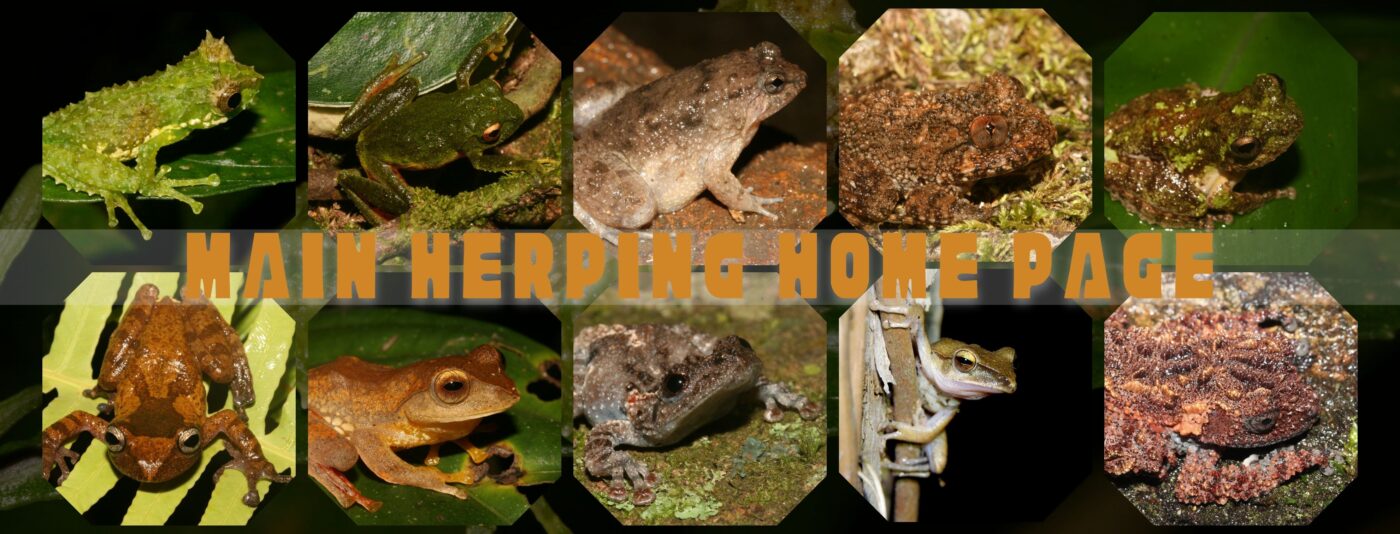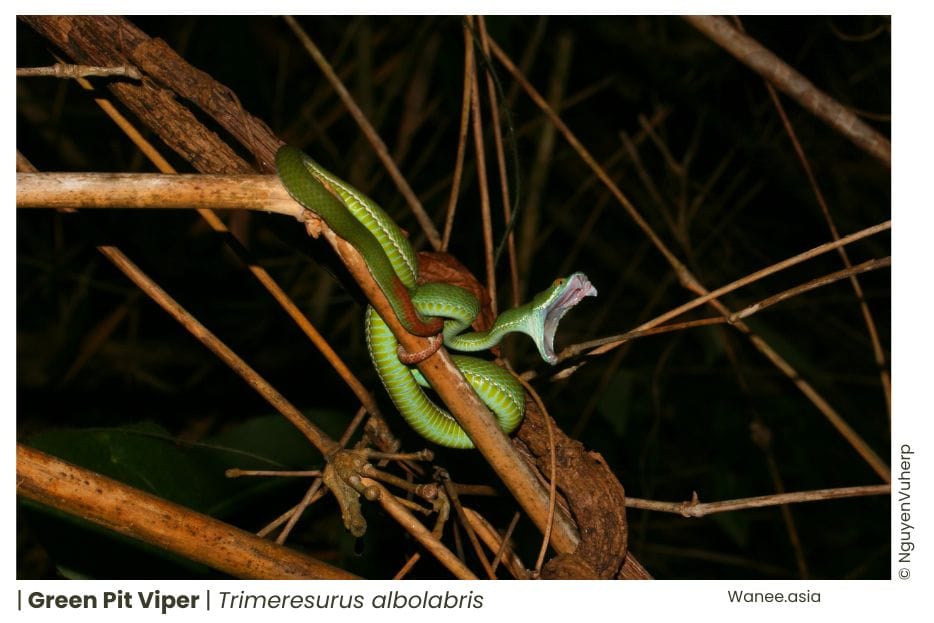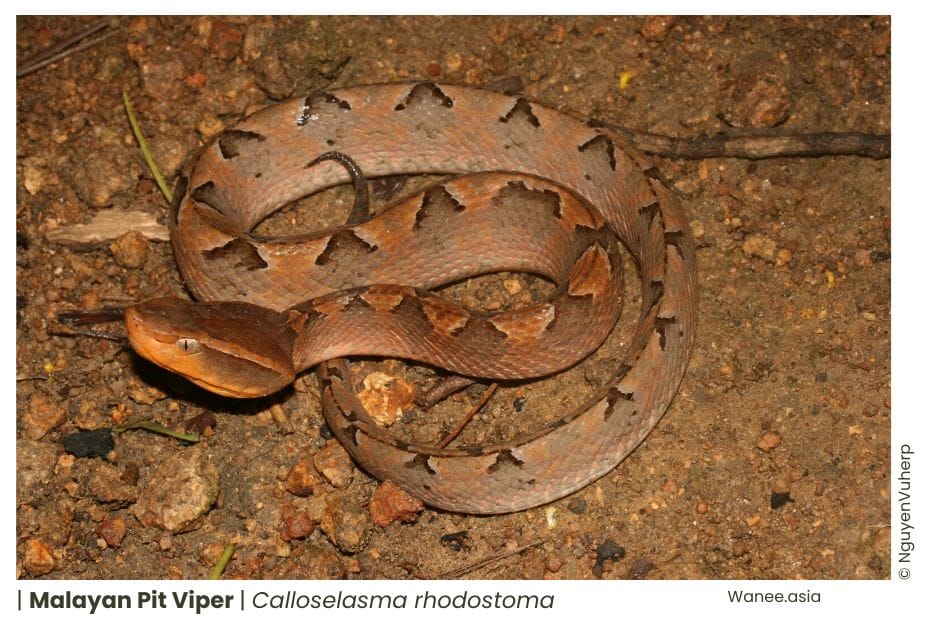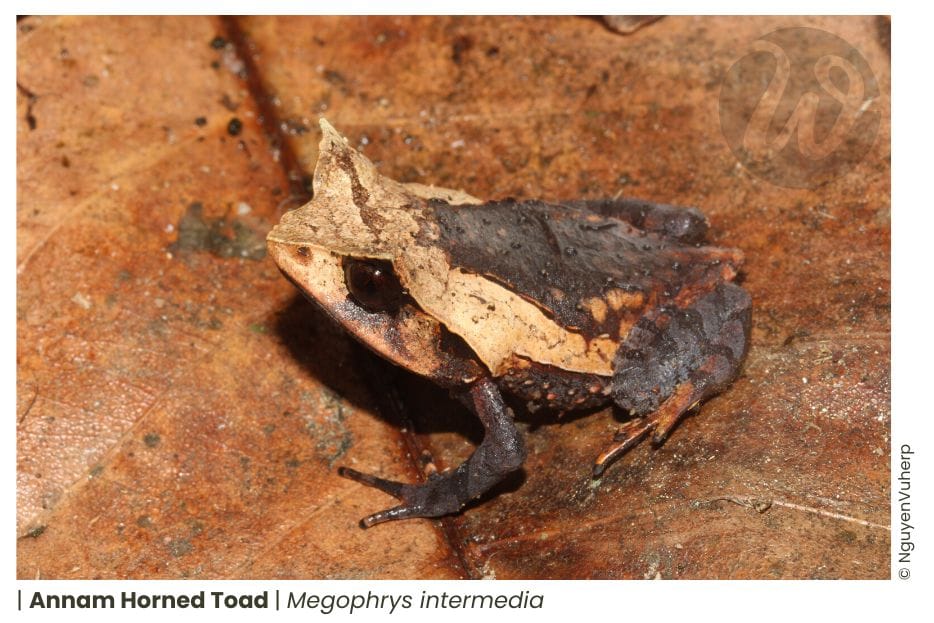Are you a herping enthusiast looking for a new adventure? Vietnam offers an incredible diversity of reptile species, with over 300 species of snakes and lizards found across the country. Here’s everything you need to know to plan your herping in Vietnam.

What to See
Vietnam is home to a wide variety of snake and lizard species, ranging from the small and harmless to the large and venomous. Some of the most sought-after species include the king cobra, banded krait, green pit viper, and reticulated python. Other fascinating species include the Vietnamese water dragon, sun skink, and geckos of all shapes and sizes.
- This is the 20 highlight species for Herper lover:
- Burmese python (Python bivittatus)
- King cobra (Ophiophagus hannah)
- Banded krait (Bungarus fasciatus)
- Many-banded krait (Bungarus multicinctus)
- Green pit viper (Trimeresurus albolabris)
- Bamboo pit viper (Trimeresurus gramineus)
- Large-eyed pit viper (Trimeresurus macrops)
- Mangrove pit viper (Trimeresurus purpureomaculatus)
- Wagler’s pit viper (Tropidolaemus wagleri)
- Siamese spitting cobra (Naja siamensis)
- Monocled cobra (Naja kaouthia)
- Reticulated python (Malayopython reticulatus)
- Yellow-headed keelback (Fowlea piscator)
- Red-tailed pipe snake (Cylindrophis ruffus)
- Red-tailed green rat snake (Gonyosoma oxycephalum)
- Green tree frog (Rhacophorus pardalis)
- Painted bronzeback (Dendrelaphis pictus)
- Common wolf snake (Lycodon capucinus)
- Brown cat snake (Boiga irregularis)
- Yellow-spotted keelback (Atretium schistosum)
When to Visit for herping in Vietnam
Vietnam’s tropical climate and diverse topography make it an ideal location for herping year-round. However, to increase your chances of spotting reptiles, it’s recommended to visit during the dry season which runs from November to April. During this time, the lower humidity and moderate temperatures make reptiles more active, increasing your chances of seeing them in their natural habitats.

It’s important to note that the rainy season, which typically runs from May to October, can present more challenging conditions for herping due to increased humidity and rainfall. However, with the right equipment, such as rain gear, waterproof boots, and proper lighting, you can still find reptiles during this time. Additionally, the rainy season can also bring an increase in amphibian activity and sightings.
Ultimately, the best time to visit for herping in Vietnam depends on your preferences and goals. If you’re looking for more comfortable conditions and a higher chance of spotting reptiles, plan your visit during the dry season. However, if you’re up for a challenge and interested in the potential for more amphibian sightings, the rainy season may be worth considering.
Where to Watch Reptiles & Lizards
Vietnam is a large country, and there are many places where you can find reptiles and amphibians. Some of the best locations include:
- Cat Tien National Park: Located in southern Vietnam, Cat Tien National Park is home to a diverse array of wildlife, including many species of reptiles and amphibians.
- Cuc Phuong National Park: Situated in the northern part of Vietnam, Cuc Phuong National Park is a prime location for herping, with over 100 species of reptiles and amphibians.
- Ba Be National Park: Located in the northeast of Vietnam, Ba Be National Park is a popular destination for nature enthusiasts, with many opportunities for herping.
You can also look for snakes and lizards near bodies of water or in urban areas.

How to Herp in Vietnam
Herping in Vietnam can be an exciting and rewarding experience, but it’s important to do so safely and responsibly. Always wear appropriate footwear, long pants, and long sleeves to protect yourself from snake bites and other hazards. Be respectful of wildlife and their habitats, and do not disturb them unnecessarily. It’s also recommended to hire a local guide who knows the area and can help you find the best spots to search for reptiles.

Tips for herping in Vietnam
Respect the wildlife: Never disturb or harm the reptiles and amphibians you encounter.
Wear appropriate clothing and footwear: Wear long pants and sturdy hiking boots to protect yourself from bites and stings.
Be prepared: Bring a good flashlight, a camera, and a field guide to help you identify the species you encounter.
Be patient: Herping can be a waiting game. Take your time and stay alert for any signs of movement or activity.
By following these tips, you can have an incredible herping experience in Vietnam and discover the fascinating world of reptiles.
Happy herping!
Dalat Plateau Birding Herping and Wildlife Tours
The Dalat Plateau, rising 2,000 meters above sea level, is one of Vietnam’s most important [...]
Cat Tien National Park Birding Herping and Wildlife Tours
Cat Tien National Park tours offer an unforgettable experience with sightings of Germain’s Peacock Pheasant, [...]
Western Black Crested Gibbon – Nomascus concolor
Nestled within the verdant landscapes of Vietnam, the Western Black Crested Gibbon (Nomascus concolor) emerges [...]
Northern White-cheeked Gibbon – Nomascus leucogenys
The northern white-cheeked gibbon (Nomascus leucogenys) is a Critically Endangered gibbon species indigenous to South [...]
Northern Yellow-cheeked Crested Gibbon – Nomascus annamensis
The Northern Yellow-Cheeked Crested Gibbon, or Nomascus annamensis, is an exclusive primate species found in [...]
Eastern Black Crested Gibbon – “Cao-vit Gibbon” – Nomascus nasutus
Nestled within the dense, emerald-green forests of Vietnam, the Eastern Black Crested Gibbon (Nomascus nasutus), [...]